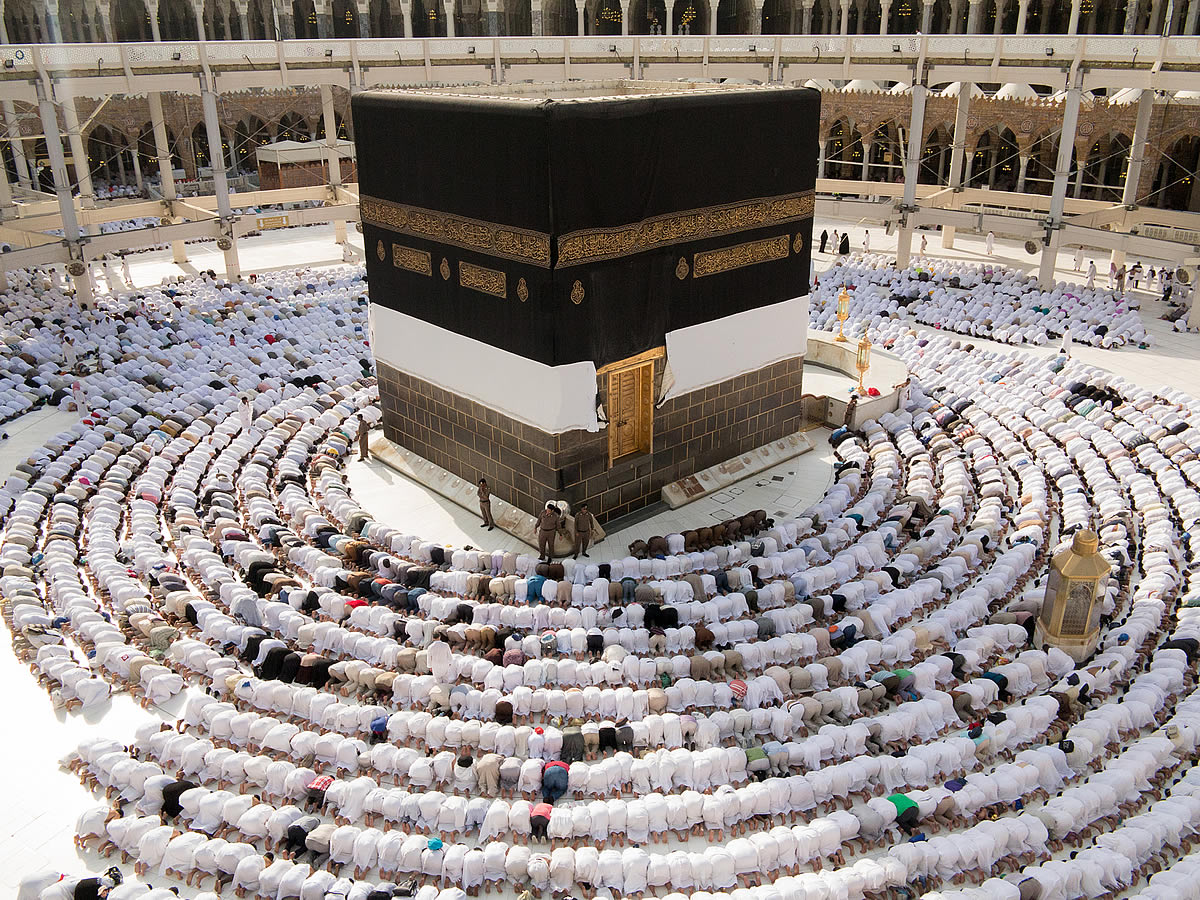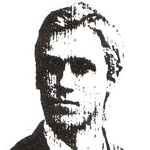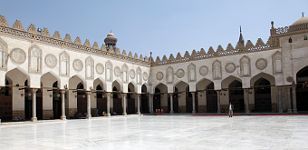MUHAMMAD IN ISLAM
Sketches Of Muhammad
From Islamic Sources
Qur'anic references were edited to reflect the verse numbers used in modern translations of the Qur'an.
Also, some footnotes were edited to give additional support for the text.
 |
| Kaaba in Mecca |
 |
BY THE
REV. WILLIAM GOLDSACK
Australian Baptist Missionary and Apologist
1871–1957
Author of: The Qu’ran In Islam, Christ In Islam,
The Traditions In Islam, God In Islam, Muhammad In Islam. . .
THE CHRISTIAN LITERATURE SOCIETY FOR INDIA
MADRAS ALLAHABAD CALCUTTA RANGOON COLOMBO
1916
PRINTED AT THE
S.P.C.K. PRESS, VEPERY, MADRAS
1916
| CONTENTS | ||
| PREFACE | v | |
| PART I | ||
| MUHAMMAD AT MECCA | ||
| CHAPTER | PAGE a | |
| I. | THE ARABS IN THE TIME OF MUHAMMAD | 1 |
| II. | THE BIRTH AND EARLY LIFE OF MUHAMMAD | 9 |
| III. | THE ANNOUNCEMENT OF THE MESSAGE | 18 |
| IV. | DISPUTATIONS WITH THE QURAISH | 29 |
| V. | THE FLIGHT FROM MECCA | 48 |
| PART II | ||
| MUHAMMAD AT MADINA | ||
| CHAPTER | PAGE | |
| I. | SOCIAL AND RELIGIOUS LEGISLATION | 57 |
| II. | THE PROCLAMATION OF JEHAD | 71 |
| III. | MUHAMMAD'S RELATIONS WITH THE JEWS | 86 |
| IV. | MUHAMMAD'S ATTITUDE TOWARDS WOMEN | 96 |
| V. | THE DEATH OF MUHAMMAD | 107 |
a. Page numbers correspond to the page numbers in the original book.
PREFACE
THIS little book does not profess to offer a complete biography of the prophet Muhammad. As its title suggests, it aims at presenting to the reader a number of pen-pictures of the great reformer, based upon purely Islamic sources. It seeks to pourtray the place given to Muhammad ‘in Islam’ and by Islam, and for that reason eschews the theories of non-Muslim authors. Not a few of the so-called ‘biographies’ of the founder of Islam written in India by modern Muslims are famous, chiefly, for their utter lack of historical accuracy. Their authors have given rein to an exuberant fancy, and have conjured up a picture of the great Arabian as untrue to history as to his own utterances which have been preserved to us by his contemporaries.
Every statement of importance made in the following pages is based upon Muhammadan authorities, and when anything of special interest or value has had to be chronicled, we have invariably given the ipsissima verba of the authorities quoted; whilst care has been taken to give precise references for the guidance of those who wish to prosecute their enquiries further.
Our first and principal authority for information regarding the personality of Muhammad is, naturally, the biographies written by his early followers, and it is a matter for sincere regret that the earliest of these is not now extant. Indeed more than one life of the prophet is mentioned by the early historians, of which no trace can now be found. It seems probable that Zuhri, who died in A.H. 124, was the first to write a biography of Muhammad. It is at least certain that he compiled collections of the traditions bearing upon various aspects of the prophet's life and character, and there is but little doubt that later writers made good use of the materials thus collected.
Two other historians are mentioned in early Muslim annals as having compiled biographies of Muhammad. These both belong to the second century of the Hijrah, and are named respectively Musa bin Okba 1 and Abu Ma’shar. None of the writings of these authors have come down to us. The same remark applies to the voluminous works of Madaini who lived during the last half of the second century of the Muhammadan era.
Another writer whose works gained a high place in the esteem of his contemporaries was Muhammad bin Ishaq, who died in A.H. 151. His collection of traditions relating to the prophet no longer exists, but his friend and disciple, Ibn Hisham, embodied in his Siratu'r-Rasul or Life of the Prophet, 2 which exists to the present day, the materials collected by Ibn Ishaq. The work of Ibn Hisham is thus the earliest extant life of the prophet available for scholars at the present time; and no one can pretend to a very extensive acquaintance with the subject who has not studied the Siratu'r-Rasul of Ibn Hisham. This writer, who is justly famous in Muslim history, died in A.H. 213, and all succeeding biographers of the prophet have largely drawn upon his work for their materials. The reader will observe that in this brief memoir also we have had frequent occasion to quote this great author.
Another writer of repute, whose works have come down to us, is Muhammad Ibn Sa’d, 3 the secretary of the famous Waqidi. He died in A. H. 230. This scholar was the author of no less than fifteen treatises, one of which was his famous Sirat or Life of Muhammad. This work is, however, rather a collection of traditions grouped according to subject-matter, than a chronological record of the prophet's life; but it contains invaluable material for all who wish to study the subject at first-hand.
Our second source of information concerning the life of Muhammad is the Traditions or Ahadith. 4 These voluminous writings, which exist in many different collections, record the sayings and actions of the prophet, and give a vivid picture of his everyday life. Originally transmitted in oral form by the earliest ‘companions’ of Muhammad they were ultimately collected and reduced to writing, and have come down to us under the names of the most famous collectors. Of these latter Bukhari and Muslim are deservedly famous. Both these scholars died in the middle of the third century of the Hijrah. Their works have been continually referred to in the present volume, as has also the Jamiu't-Tirmidhi.
Our third source of information relating to Muhammad is the Qur'an, 5 together with the standard commentaries thereon. Whatever may be said to discount the value and importance of later tradition, it must be conceded that in the Qur'an we have contemporary evidence regarding much that intimately touches the life of the founder of Islam; and no pen-picture of the warrior-prophet would be complete that did not take into account the witness of the Qur'an. This, again, is richly supplemented by the commentators, who relate innumerable incidents in the prophet's life in order to elucidate some obscure passage or illustrate some ambiguous text. In our study of Muhammad in Islam we have referred continually to the great classical commentaries of ‘Abbas, 6 Baidawi 7 and the Jalalain, 8 as well as to the later, and less authoritative commentaries of Qadari, ‘Abdu’l-Qadir, Raufi and the Khalasatu't-Tafasir.
One thing more remains to be said. We have, to some extent, followed the lead of some of the earlier biographers of Muhammad, and have chosen to group the various chapters of the book according to subject-matter, rather than in strict chronological order; so that, whilst, in the main, the two great divisions in the prophet's career—his life at Mecca, and his life at Madina—have been observed, it has not infrequently happened that events belonging to the one period have been grouped with similar events belonging to the other. The endeavour has been made throughout to remain true to the title of the book, and to record only those events relating to the life of Muhammad which are found chronicled ‘in Islam’.
December, 1915
William Goldsack
1. Musa bin Uqba, Kitab-ul-Maghazi, A Fragment of the Lost Book of Musa B. 'Uqba, A. Guillaume, The Life of Muhammad, A Translation of Ishaq’s Sirat Rasul Allah, p. xlii - xlvii.
2. Alfred Guillaume, The Life of Muhammad, A Translation of Ishaq’s Sirat Rasul Allah, Oxford Press, Oxford, England, 2002, p. 860.
3. Ibn Sa'd. See also,Kitab Al-Tabaqat Al Kabir.

